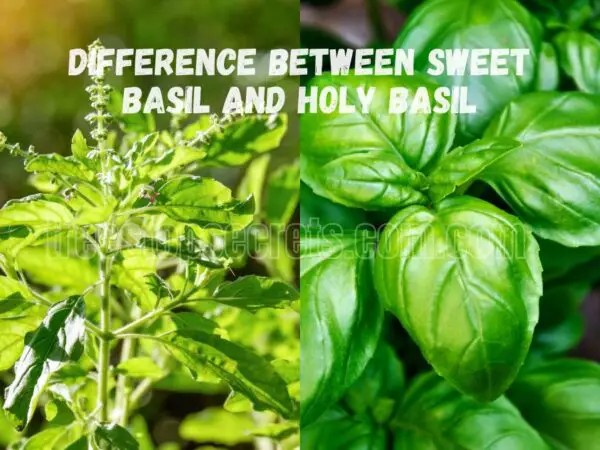Love the taste of fresh basil but wish you could enjoy it all year round? Look no further! Ever wondered how do you dry basil? Well, we've got you covered. Drying basil leaves is not only a popular preservation method, but it also ensures that you can savor the flavor of this aromatic herb whenever you please. With just a few simple steps, you can dehydrate basil and unlock its incredible versatility in various recipes.
By drying basil, you transform its vibrant green leaves into dehydrated basil, which can be easily stored and used whenever your culinary adventures call for it. Whether sprinkled over pasta dishes, added to soups or stews, or infused into oils and vinegars, dried basil adds an irresistible burst of flavor to any recipe. So why wait? Let's dive into the world of drying basil and discover how this simple technique can elevate your cooking game!
Benefits of Drying and Preserving Basil
Preserving the flavor and aroma of fresh basil for longer periods is one of the key benefits of drying and preserving this versatile herb. By drying basil, you can capture its essence and enjoy it throughout the year, regardless of seasonal variations. Let's explore some more reasons why drying basil is a cost-effective and convenient way to have this herb on hand.
Preserving Flavor and Aroma
Drying basil allows you to preserve its vibrant flavor and delightful aroma, ensuring that you can savor its essence long after it has been harvested. Fresh basil has a distinct taste that adds a unique touch to various dishes, from pasta sauces to salads. However, fresh herbs tend to wilt quickly, making it challenging to keep them at their peak for extended periods.
By drying basil leaves, you can lock in their flavors and aromas while extending their shelf life significantly. This means that even months later, when winter sets in or when fresh basil becomes scarce, you can still enjoy the same intense taste and fragrance that only dried basil can provide.
Year-Round Availability
One of the most significant advantages of dried basil is its availability throughout the year. Unlike fresh basil that may be limited during certain seasons or unavailable altogether in some regions, dried basil can be easily obtained whenever needed. This accessibility ensures that your favorite recipes won't be compromised due to a lack of fresh herbs.
Whether it's a hearty tomato sauce on a cold winter night or a refreshing caprese salad during summer barbecues, having dried basil readily available ensures that your culinary creations are never devoid of this essential ingredient.
Cost-Effectiveness and Convenience
Having dried basil on hand offers both cost-effectiveness and convenience. Purchasing fresh herbs regularly can add up quickly in terms of expenses. On the other hand, buying bulk quantities of dried herbs allows you to save money while enjoying their benefits over an extended period.
Furthermore, dried basil is incredibly convenient to use. Unlike fresh basil, which requires washing, drying, and chopping before use, dried basil can be added directly to your recipes. This time-saving aspect makes it an ideal choice for busy individuals who want to enhance their dishes without spending too much time in the kitchen.
Step-by-Step Guide: How to Dry Basil Leaves
Harvesting fresh basil leaves at the right time for optimal drying results
The first step is crucial – harvesting the leaves at the right time. For optimal flavor and aroma, it's best to pick basil leaves just before they start flowering. This is when they are at their most flavorful and contain the highest concentration of essential oils.
To harvest your basil, simply use a pair of clean scissors or garden shears to cut off individual stems just above a leaf node. Avoid removing more than one-third of the plant at a time as this can hinder its growth. Remember that regular pruning promotes bushier growth and ensures a continuous supply of fresh basil throughout the season.
Properly washing and preparing the leaves before drying them
After harvesting your basil, it's important to wash the leaves thoroughly to remove any dirt or debris. Start by gently rinsing them under cool running water, ensuring all sides are clean. Pat them dry with a clean kitchen towel or paper towels.
Once your basil leaves are clean and dry, you can prepare them for drying by removing any damaged or discolored parts. Simply pluck off any yellowed or wilted leaves and discard them. It's also recommended to remove any thick stems as they can take longer to dry compared to the delicate leaves.
Different methods for air-drying, oven-drying, or using a dehydrator to dry basil
Now that your basil is ready for drying, there are several methods you can choose from depending on what equipment you have available:
- Air-drying: This traditional method requires no special equipment but does require patience. Gather small bunches of basil stems together with twine or rubber bands and hang them upside down in a warm, well-ventilated area away from direct sunlight. The herbs will gradually dry within 1-2 weeks.
- Oven-drying: If you're short on time, using your oven can expedite the drying process. Preheat your oven to the lowest temperature setting (around 180°F or 80°C). Spread the basil leaves in a single layer on a baking sheet lined with parchment paper. Place the sheet in the oven and leave the door slightly ajar to allow moisture to escape. Check regularly until the leaves are dry and crumbly, usually within 1-2 hours.
- Using a dehydrator: If you have a dehydrator, this is another efficient option for drying basil. Simply arrange the clean basil leaves in a single layer on the dehydrator trays, ensuring they don't overlap. Set the temperature between 95°F (35°C) and 115°F (46°C), and let it run for approximately 1-4 hours until the leaves are completely dried.
No matter which method you choose, make sure to store your dried basil in an airtight container away from direct light and heat. Properly stored, dried basil can retain its flavor for up to one year.
By following these simple steps, you can easily dry your own fresh basil leaves at home and enjoy their delightful flavor throughout the year. So go ahead, harvest that fragrant herb garden of yours and start preserving those precious basil leaves!
Oven vs. Dehydrator: Comparing Drying Methods
Advantages and disadvantages of using an oven to dry basil leaves
Using an oven to dry basil leaves can be a convenient method with its own set of advantages and disadvantages. One advantage is that most households already have an oven, making it easily accessible for drying herbs like basil. Ovens offer precise temperature control, allowing you to set the ideal heat for drying without much effort.
On the other hand, there are some drawbacks to using an oven for drying basil. Firstly, it can be time-consuming as the process usually takes a few hours or even longer depending on the amount of basil being dried. Secondly, the heat from the oven can sometimes cause the basil leaves to lose their vibrant green color and essential oils, affecting both appearance and flavor. Finally, using your regular cooking oven for drying herbs may result in residual odors that could transfer to future meals.
The benefits and efficiency offered by a dedicated dehydrator for drying herbs like basil
A dedicated dehydrator proves to be a game-changer. These specialized appliances are designed specifically for dehydration purposes and offer several advantages over ovens.
One significant benefit is that dehydrators provide consistent airflow throughout their trays, ensuring even drying of each individual leaf. This results in more uniform results compared to ovens where some parts may dry faster than others due to uneven heat distribution.
Dehydrators also have adjustable temperature settings that cater specifically to herb-drying needs. This allows you to maintain low temperatures that preserve the flavors and essential oils of the basil leaves without risking overheating or scorching them.
Furthermore, dehydrators often come with multiple trays or racks, providing ample space for large quantities of basil leaves all at once. The stacked design maximizes efficiency by allowing you to dry significant amounts of herbs simultaneously.
Factors to consider when choosing between oven-drying or using a dehydrator for drying basil
When deciding between oven-drying and using a dedicated dehydrator for drying basil, there are several factors to consider.
- Convenience: If you already own a dehydrator, it offers the convenience of being specifically designed for herb drying. However, if you don't have one, using an oven might be more convenient since it's readily available in most households.
- Time: Dehydrators tend to dry herbs faster than ovens due to their efficient airflow and temperature control. If time is of the essence, a dehydrator would be the better option.
- Quality: Dehydrators provide more consistent results with evenly dried leaves compared to ovens. If you prioritize high-quality dried basil with vibrant color and strong flavors, a dehydrator would be the preferred choice.
- Quantity: If you need to dry large quantities of basil at once, a dehydrator's multiple trays offer ample space for efficient drying. Ovens may have limited capacity depending on their size.
Alternative Techniques: Microwave and Air Drying Basil
Microwave Drying: A Quick Overview
Microwave drying is a convenient alternative method for preserving basil when time is of the essence. This technique allows you to retain the flavors and aromas of fresh basil in a fraction of the time compared to traditional methods.
To dry basil in the microwave, start by washing and patting dry the leaves. Place them on a microwave-safe plate lined with a paper towel, ensuring they are evenly spread out. Set your microwave to its lowest power setting, typically around 30% or defrost mode, to prevent overheating or scorching the leaves.
Microwave the basil in short bursts, usually 30 seconds at a time, until it becomes brittle and crumbles easily between your fingers. Be cautious not to overdo it as this may result in burnt or discolored leaves.
Once dried, allow the basil leaves to cool completely before transferring them into an airtight container. Ensure that no moisture remains as any leftover dampness can lead to mold growth during storage.
Exploring Minimal-Equipment Air-Drying Techniques
Air-drying basil offers an energy-efficient approach that requires minimal equipment while maintaining optimal flavor and quality. By utilizing natural airflow, you can effectively dry your basil without relying on electricity-consuming appliances.
To air-dry basil, begin by harvesting healthy stems from your plant. Gently remove any damaged or wilted leaves before giving them a thorough rinse under cold water. Pat them dry with paper towels or let them air-dry naturally for a few minutes.
Next, bundle together several stems using twine or string and hang them upside down in a well-ventilated area away from direct sunlight. This could be your kitchen pantry, attic, or any place where there is good airflow.
Allow the basil to air-dry for approximately one to two weeks until the stems become crispy and break easily. Throughout the drying process, regularly check for signs of mold or mildew and remove any affected stems promptly.
Once fully dried, separate the leaves from the stems by gently rubbing them between your hands. Store the dried basil in an airtight container to maintain its flavor and aroma for an extended period.
By opting for air-drying techniques, you not only reduce energy consumption but also embrace a more sustainable approach to preserving your basil harvest.
Utilizing Dried Basil: Culinary and Tea Recipes
Inspiring culinary uses for dried basil in pasta sauces, soups, marinades, etc.
Dried basil leaves are a fantastic addition to various culinary creations. Their concentrated flavor adds depth and complexity to dishes like pasta sauces, soups, and marinades. Here are some inspiring ways to incorporate dried basil into your favorite recipes:
- Pasta Sauces:
- Enhance the flavor of tomato-based pasta sauces by adding a teaspoon or two of dried basil leaves.
- Create a vibrant pesto sauce by combining dried basil with fresh basil leaves, garlic, pine nuts, Parmesan cheese, olive oil, and salt.
- Soups:
- Add a tablespoon of dried basil leaves to hearty vegetable soups for an aromatic twist.
- Sprinkle some dried basil on top of creamy tomato soup to elevate its taste.
- Marinades:
- Infuse your marinades with the essence of dried basil by mixing it with other herbs like oregano and thyme.
- Combine dried basil with lemon juice, olive oil, garlic, and black pepper for a zesty chicken marinade.
Creative ways to incorporate dried basil into homemade tea blends
Apart from its culinary applications, dried basil can also be used to create unique homemade tea blends that offer both flavor and health benefits. Get creative with these ideas:
- Basil Mint Tea:
- Blend equal parts of dried basil leaves and mint leaves for a refreshing herbal tea.
- Steep the mixture in hot water for 5-7 minutes before straining it into your cup.
- Lemon Basil Infusion:
- Combine dried basil leaves with lemon zest for a citrusy twist in your tea.
- Steep the mixture in boiling water for about 10 minutes before enjoying its bright flavors.
- Herbal Blends:
- Mix dried basil with other herbs like chamomile, lavender, or lemongrass to create unique herbal tea blends.
- Experiment with different ratios and combinations to find your preferred flavor profile.
Sharing simple yet delicious recipes that showcase the flavors of dried basil
To fully appreciate the flavors of dried basil, try these simple yet delicious recipes:
- Caprese Salad Skewers:
- Thread cherry tomatoes, fresh mozzarella balls, and fresh basil leaves onto skewers.
- Sprinkle some crushed dried basil over the skewers for an extra burst of flavor.
- Basil Lemonade:
- Combine freshly squeezed lemon juice, water, sugar (or sweetener), and a pinch of dried basil in a pitcher.
- Stir well until the sugar dissolves and refrigerate for a couple of hours before serving over ice.
- Tomato Basil Bruschetta:
- Toast slices of baguette until golden brown.
- Mix diced tomatoes, minced garlic, olive oil, balsamic vinegar, salt, pepper, and dried basil in a bowl.
- Spoon the tomato mixture onto the toasted bread slices and serve as an appetizer or snack.
Incorporating dried basil into your culinary creations adds depth and complexity to your dishes while also offering unique possibilities for homemade tea blends. Whether you're experimenting with pasta sauces or exploring refreshing infusions, let the flavors of dried basil elevate your culinary adventures.
Substituting Dried Basil in Cooking
Suggesting appropriate substitutions when fresh basil is not available
Sometimes, you may find yourself craving the vibrant flavor of basil in your dishes, only to realize that you don't have any fresh basil on hand. But fear not! Dried basil can be a fantastic substitute that will still add a burst of flavor to your cooking. While it may not provide the same freshness as its fresh counterpart, dried basil brings its own unique qualities to the table.
When substituting dried basil for fresh in your recipes, keep in mind that dried herbs are more potent than fresh ones. As a general rule of thumb, you'll want to use about one-third of the amount specified for fresh basil. For instance, if your recipe calls for three tablespoons of fresh basil, one tablespoon of dried basil should suffice.
Highlighting how dried basil can enhance dishes with its concentrated flavor
One advantage of using dried basil is its concentrated flavor profile. The drying process intensifies the herb's taste and aroma, making it an excellent addition to many dishes. Whether you're preparing pasta sauces, soups, stews, or even marinades, dried basil can elevate the flavors and bring a delightful earthiness to your creations.
To make the most out of dried basil's concentrated flavor, it's best to add it early on in the cooking process. This allows the herb ample time to infuse into your dish and release its full potential. Remember that dried herbs need some time to rehydrate while cooking. If you're making a slow-cooked dish like a hearty stew or simmering sauce, give it enough time for the flavors to meld together.
Providing tips on adjusting quantities when substituting dried for fresh
As mentioned earlier, adjusting quantities is crucial when swapping out fresh basil with its dried counterpart. To ensure a harmonious balance of flavors in your recipes:
- Start by using only a third of the amount of fresh basil called for in the recipe.
- Taste your dish as it cooks and adjust the seasoning accordingly. You can always add more dried basil if needed, but it's challenging to tone down an overpowering flavor once it's there.
- If you're unsure about the exact amount to use, begin with a smaller quantity and gradually increase until you achieve your desired taste.
Remember, cooking is an art, and experimentation is part of the fun! Feel free to get creative and adapt recipes to suit your personal preferences.
Conclusion: Mastering the Art of Drying Basil
In this guide, we've explored the wonderful world of drying basil and all its benefits. You now have the knowledge to preserve your fresh basil for future use, ensuring that none of its delightful flavors go to waste.
We started by discussing the advantages of drying and preserving basil. By drying your own basil leaves, you can enjoy their flavor year-round and save money compared to buying store-bought dried herbs. Dried basil is incredibly versatile and can be used in various culinary creations and even tea recipes.
Next, we provided a step-by-step guide on how to dry basil leaves. Whether you choose to air dry them, use an oven or dehydrator, or even microwave them, we covered each method in detail so you can find the one that suits you best.
We also compared different drying methods such as oven versus dehydrator techniques. Each method has its pros and cons, so it's important to consider factors like time, convenience, and desired outcome when choosing which method to use.
For those looking for alternative techniques, we explored microwave and air drying options for basil. These methods are quick and efficient if you're short on time or prefer a more hands-off approach.
Once your basil is dried and ready to use, we discussed various ways to incorporate it into your culinary creations. From adding it to pasta dishes and soups to infusing it into oils or making flavorful teas, dried basil can elevate any recipe with its aromatic essence.
Lastly, we touched upon substituting dried basil in cooking. While fresh basil has a distinct taste that cannot be fully replicated by dried basil alone, we provided suggestions on how to adjust your recipes when using dried instead of fresh.
Now that you've learned the art of drying basil, it's time for you to put this newfound knowledge into practice! Start experimenting with different methods and recipes that incorporate dried basil – unleash your culinary creativity and savor the flavors of this delightful herb.
FAQs: How Do You Dry Basil?
Can I use dried basil instead of fresh in my recipes?
Yes, you can substitute dried basil for fresh in most recipes. However, keep in mind that dried basil has a more concentrated flavor, so you'll need to use less than the amount specified for fresh basil.
How long does it take to dry basil using different methods?
The drying time varies depending on the method used. Air drying can take up to two weeks, while oven drying typically takes around 1-2 hours. Using a dehydrator or microwave can significantly reduce drying time to just a few hours.
Can I store dried basil for a long period of time?
Yes, properly stored dried basil can last up to one year without losing its flavor. Ensure it is stored in an airtight container away from direct sunlight and moisture.
Are there any other uses for dried basil besides cooking?
Absolutely! Dried basil can be used to make fragrant herbal teas or infused into oils and vinegars for added flavor. It can also be used as potpourri or placed in sachets to add a pleasant aroma to your living spaces.
Can I dry other herbs using the same methods described here?
Yes, the methods discussed in this guide are applicable to various herbs. Feel free to experiment with different herbs and discover new ways of preserving their flavors.
Remember, don't let your freshly grown basil go unused – dry it, preserve it, and enjoy its delightful taste all year round!
Image Source: Paid image from CANVA




